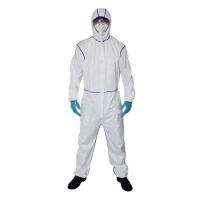
NewsInformation Center
Protective Clothing and Personal Protective Equipment (PPE)
2020/05/19
Protective clothing is any clothing specifically designed, treated or fabricated to protect personnel from hazards that are caused by extreme environmental conditions, or a dangerous work environment. Some protective clothing may be designed to protect the workers from the working environment due to infection or pollution. Protective clothing or any protective equipment is often referred to as personal protective equipment (PPE).


Doctors and dentists may use protective clothing like disposable gloves to prevent contamination. Sportsmen wear baseball protective gear, hockey masks, jockstraps, etc. Protective clothing also extends to body armor such as bullet proof vests, historical armor and futuristic powered armor. Typical materials include Nomex and Kevlar. Some examples of types of protective clothing include protective headgear, gloves or hand protection, eye protection like safety goggles, hearing protection like earplugs, protective footwear and others such as safety harnesses, or life preservers.
Personal protective equipment (PPE) refers to kind of devices worn by the worker to protect against hazards in environment. PPE prevents the worker to contact with a hazardous agent or equipment by creating a barrier between the potential hazardous material and the healthcare worker, and substantially protects them from risks of
injury or illness. Several type of PPE is being used in the workplace depending on their specification and application, for example, respirators, gloves, and hearing protectors.
Personal protective equipment, or PPE, is designed to protect you from hazards found on or off the job. Face shields used in ice hockey and helmets used for biking are examples of PPE;
Previous: Five ASTM Standards For Masks Testing
N e x t : what is fabric pilling ?



